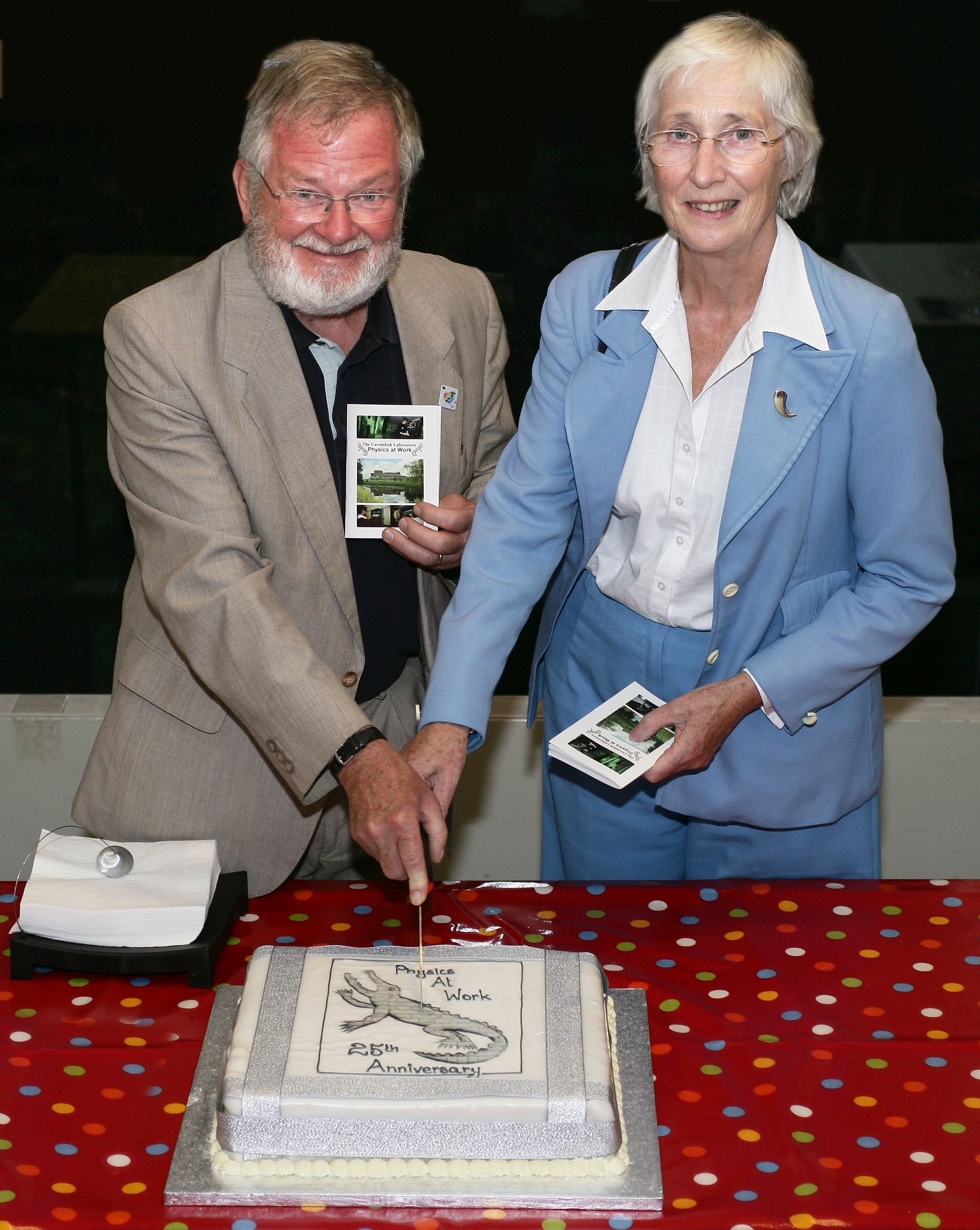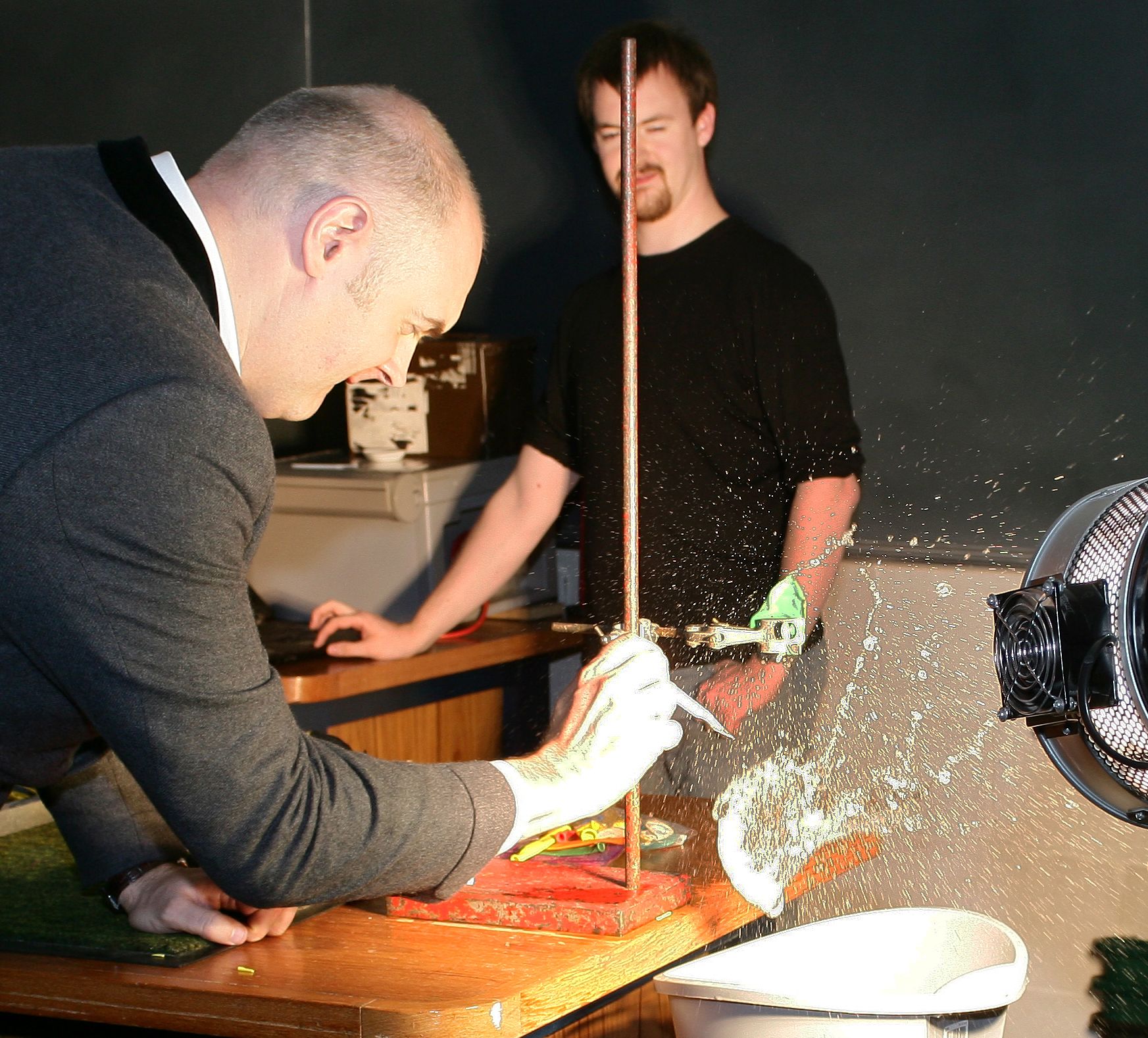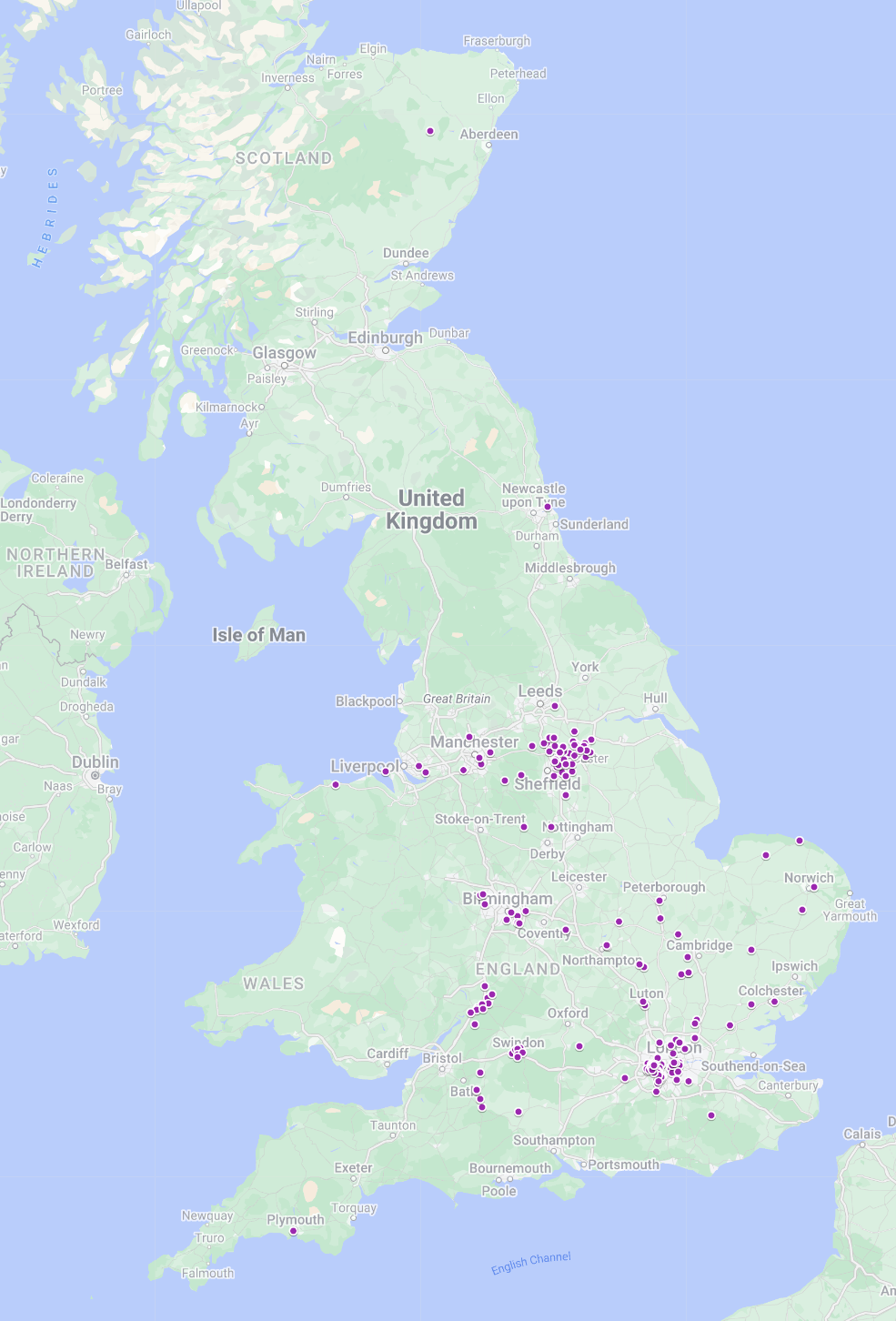A potted history of Cavendish outreach
From the pioneering work of Brenda Jennison to the ever-evolving programme run by today’s outreach team, Lisa Jardine-Wright and Nicki Humphry-Baker trace the history of the Cavendish Laboratory’s work to inspire the next generation of physicists.
Outreach programme is probably the longest running outreach initiative in the country, if not in the world. For more than 40 years, Cavendish Outreach has been working with students and teachers, raising students’ aspirations to study physics at the next stage of their career and supporting teachers to build their students’ confidence and deliver inspiring lessons.
It all began with the pioneering work of Brenda Jennison MBE who trained physics teachers in the Cavendish Laboratory, rather than at the Faculty of Education. Outreach was not a common term used around this time and the ‘programme’ began with a series of meetings for local physics teachers to discuss teaching ideas and to provide mutual support and enthusiasm over a cup of tea and a biscuit or a cake.
These later developed into a lecture series especially for teachers and their students hosted by the Cavendish – The Cambridge Physics Centre Lectures. The first lecture was given on the 3rd October 1979 by O Heavens and M Ebison about ‘Careers in Physics’. These lectures encouraged up and coming researchers to talk about their work, providing not only inspiration for the next generation but enabling researchers to develop and hone their communications skills. The series is still going strong and has a history of eminent speakers including Stephen Hawking, Athene Donald, Brian Pippard, Herman Bondi and Simon Singh.
The series continues and this year’s programme can be seen at https://outreach.phy.cam.ac.uk/programme/cpc
Images: (Left) Brenda Jennison and Mick Brown in 2009 celebrating the 25th Anniversary of Physics at Work. (Right) Dara Ó Briain getting in on the 25th Anniversary Physics at Work action.
In 1984, Mick Brown returned from an IOP meeting and spoke with Brenda about the idea of running exhibitions
at universities to demonstrate the applications of physics in research and industry to school students. That same year Physics at Work was born at the Cavendish, whose milestone 40th anniversary will be celebrated at an event in the Ray Dolby Centre next year.
On her appointment in 1970, Brenda aimed to address these problems by:
- Training more good physics teachers. • Providing schools with lectures on cutting edge science to inspire students and teachers alike.
- Enabling students to experience ‘the point of physics’ and its wide range of potential applications.
- Showing that physics is for everyone, irrespective of background, gender or ethnicity.
These aims are still poignant and central to our strategy.
Image: Example of school locations of those visiting Cambridge Physics Experience events.
The Cambridge Physics Centre Lectures and Physics at Work continue to be flagship events of Cavendish Outreach in a landscape where what it means to ‘do outreach’ has significantly evolved. Sadly, the problems for physics education in schools have not improved as much as might have been hoped given the effort and resources that has been put into outreach over the last 30 to 40 years.
The number of students studying physics remains lower than they were in the 1950s, although 2024 has shown a glimmer of hope with a 12% increase in the number of students taking A level physics in England. However, there was little movement on the proportion of women taking A level physics which remains at around 23%. There continues to be a shortage of physics graduates going into teaching, resulting in more than 20 years of under-recruitment, compounded by the fact that too many new teachers leave after a relatively short time. The National Foundation for Educational Research school workforce census data shows that about 10% of science and mathematics teachers leave the teaching profession each year.
When I [Lisa] began in educational outreach at the Cavendish in 2006, I was able to review our offer and consider what other initiatives we might include in our portfolio. Arranging a scientist to visit a school is a lot easier logistically for teachers than arranging a school trip but experience had shown that visiting a university department was a key factor in encouraging future undergraduates and changing their perspective that ‘it is just not for me’. We began two new programmes, one for teacher continuing professional development and one for their students – the Cambridge Physics Experience. The Cambridge Physics Experience (CPE) was designed to address two factors. The first factor was meeting the need from Cambridge colleges to provide departmental visits and experiments for their visiting school students. Secondly, to provide a sustained programme of multiple interventions and engagements for students as they progress through their secondary education from year 7 to 11 and on to sixth form. It is perhaps unsurprising that research has shown that one off interventions can be inspirational but struggle to achieve long term impact or to change student perspectives. CPE engages students regularly throughout their education, embedding the impact of our work.
The Cambridge Physics Experience continues today with half-day interactive experiences for students in year 7, 8, 9 (key stage 3) and year 12 (sixth form) with Physics at Work providing an interactive experience for year 10 and 11 students. The original objective of the Cavendish outreach programmes was to provide opportunities for those schools and students within a sensible travel time of Cambridge – perhaps up to a 70-mile radius. However, the programmes have become so successful that schools are travelling from far and wide.
Brenda’s legacy lives on through her donation to provide funding for travel bursaries and teacher cover bursaries for schools and students who would otherwise struggle to be able to attend our events (outreach.phy.cam.ac.uk/bursaries).
The evolution of the Cavendish’s outreach continues, endeavouring to increase the flow of budding physicists with new programmes for primary schools delivered by the current outreach team of Jacob Butler, Steve Martin and Nicki Humphry-Baker. These programmes aim to counter the drop off in interest in science that occurs in early secondary. Locally, primary school teachers are offered training and class sets of experiments to nuture the scientific inquisitivenouss in primary school students, so that they can build on that as they progress through secondary school.
Further afield, a primary programme with similar aims called Think Like a Scientist is developed with primary schools in Rochdale in collaboration with the University of Cambridge’s Admissions Office, the University of Oxford and the Rochdale local authority. This programme will take a cohort of students chosen from primary schools in Rochdale and build their skills and confidence in the physical sciences throughout a year-long series of activities.
Both programmes will raise aspirations, while giving the students the tools to achieve their ambition, which is an idea that runs through all of the outreach programmes. The pipeline of future physicists is vital for our UK economy and long may the Cavendish continue to encourage the next generation of problem solvers and world-leading scientists.
Students’ reactions to Cavendish Outreach Events
Y9 visitors
‘Now I am definitely likely to pick physics for my GCSE's. Also the speeches which were given really inspired me to actually try really hard in my physics.’
‘I found out that Physics has a huge variety of uses that I never knew about. I am definitely more interested in it and I really enjoyed the visit.’
Y12 visitors
‘The tour of the museum
in Cavendish labs really emphasized the impact that physics has had on our society. I found it really inspiring.’
‘It showcased what living in a university would be like, which I found incredibly inspiring.’
Y11 visitors
‘I was really worried about staying away from home but now that I see the opportunities and good atmosphere this factor seems smaller.’


